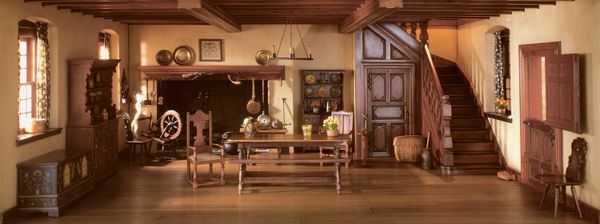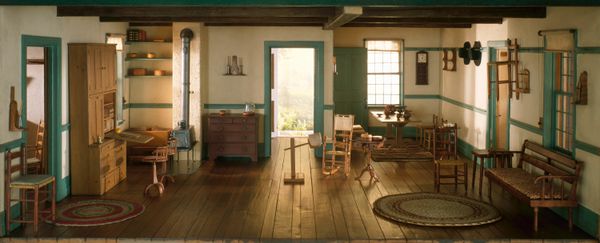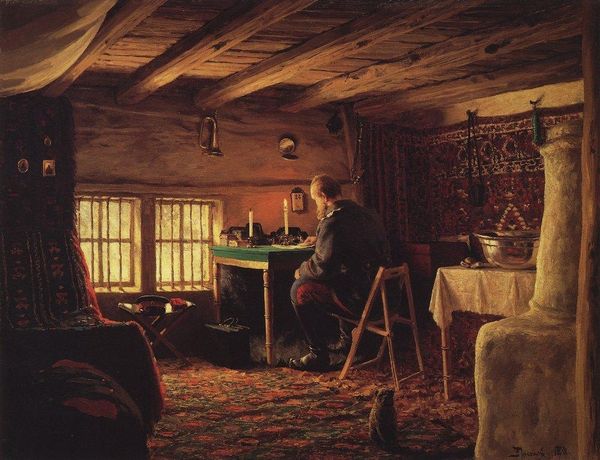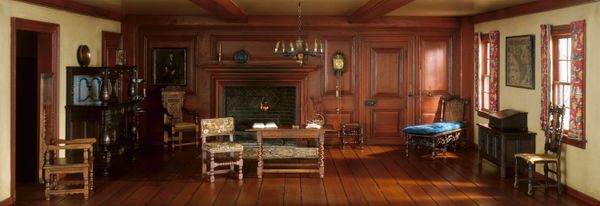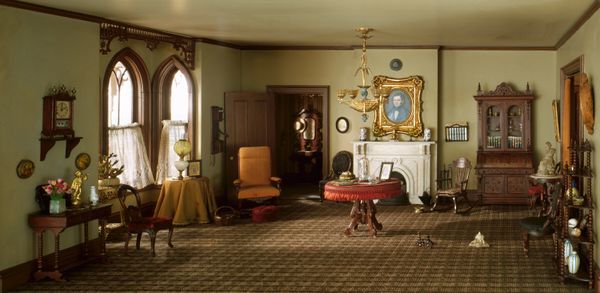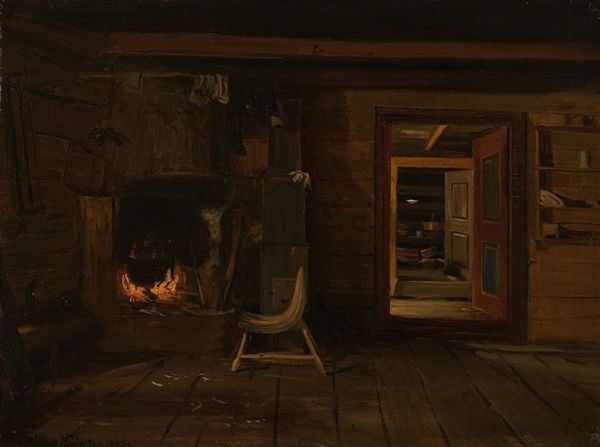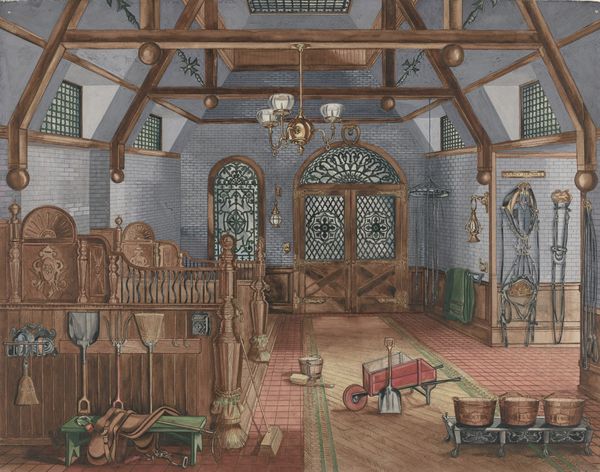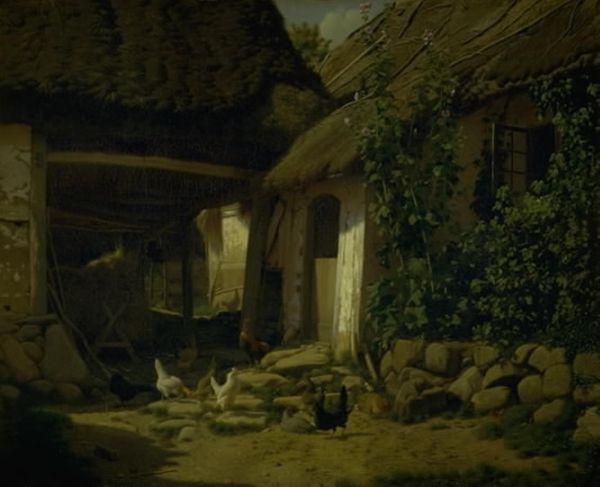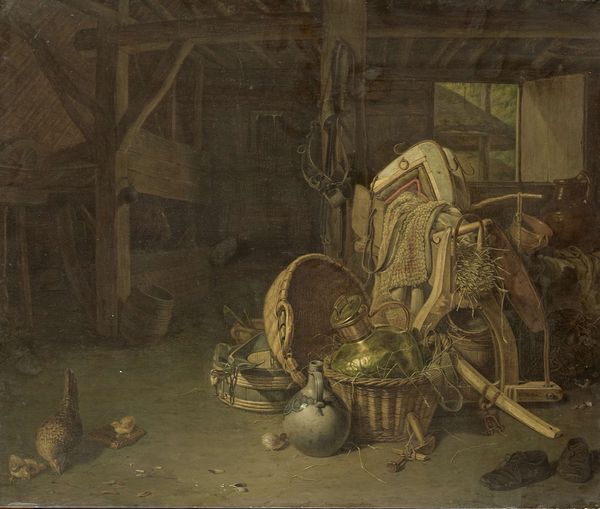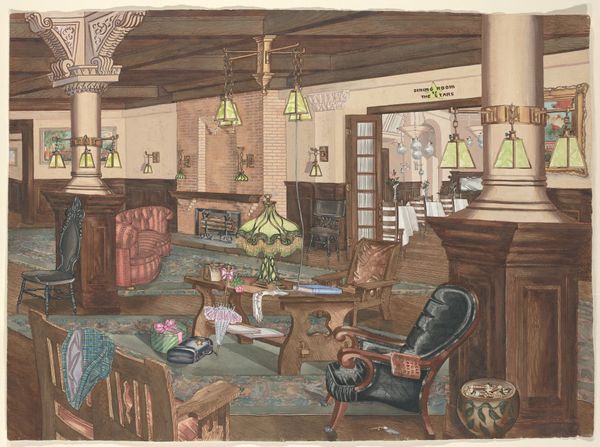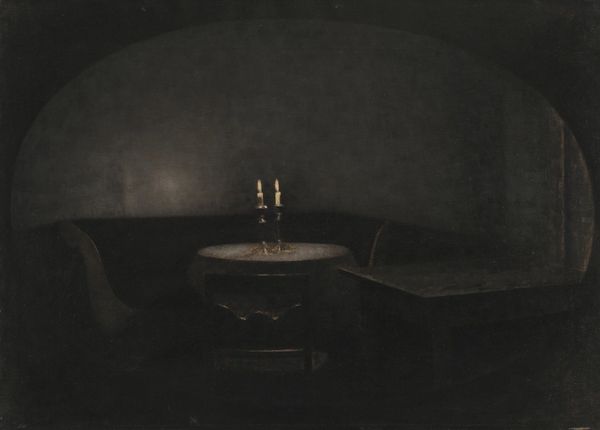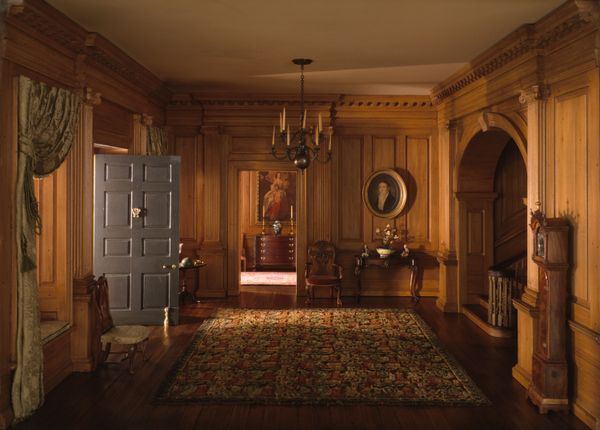
E-5: English Cottage Kitchen of the Queen Anne Period, 1702-14 c. 1937
0:00
0:00
painting, architecture
#
painting
#
landscape
#
traditional architecture
#
folk-art
#
genre-painting
#
miniature
#
architecture
Dimensions: Interior: 10 × 19 1/2 × 16 3/4 in. (25 × 48.75 × 41.875 cm) Scale: 1 inch = 1 foot
Copyright: Public Domain
Editor: So this is "E-5: English Cottage Kitchen of the Queen Anne Period, 1702-14" by Narcissa Niblack Thorne, created around 1937. What strikes me most is the incredible detail and craftsmanship in this miniature room; the textures of the wood and stone are so convincing. What’s your perspective on this work? Curator: As a materialist, I'm drawn to how this piece reifies labor and production. Consider the making of a miniature versus a full-scale kitchen. Is the labor qualitatively different? Are we meant to marvel at the skill precisely because it mimics a larger reality at such a compressed scale? Editor: That’s an interesting point. I hadn't really considered the labor aspect. Do you see a challenge to the traditional hierarchy of art and craft here, given the meticulous handmade nature of the piece? Curator: Absolutely. It invites us to question that hierarchy. It makes us ponder, what elevates “fine art” over meticulous craft? Is it merely scale and function? Look at the arrangement of objects, mimicking a real lived-in space with carefully chosen commodities that become symbols of social status. How does the miniature format change their meaning? Editor: It's fascinating to think about how the material reality and labor of creating this reflect broader societal structures and the perception of value. So, it is not merely an aesthetic object, but also… Curator: …a dense site of production and reproduction of cultural meanings. The domestic interior presented in miniature exposes both its reliance on crafted materials, but also offers to make such material relations seem naturalized, historical, even quaint. We can explore these tiny representations as social performance. Editor: I definitely have a new appreciation for miniatures now, seeing them as reflections of labor and cultural value. Thanks! Curator: Likewise, your observations about the surface texture helps illustrate its ability to convincingly mimic real things. It raises important issues on skill, commodity, class and cultural display.
Comments
No comments
Be the first to comment and join the conversation on the ultimate creative platform.
